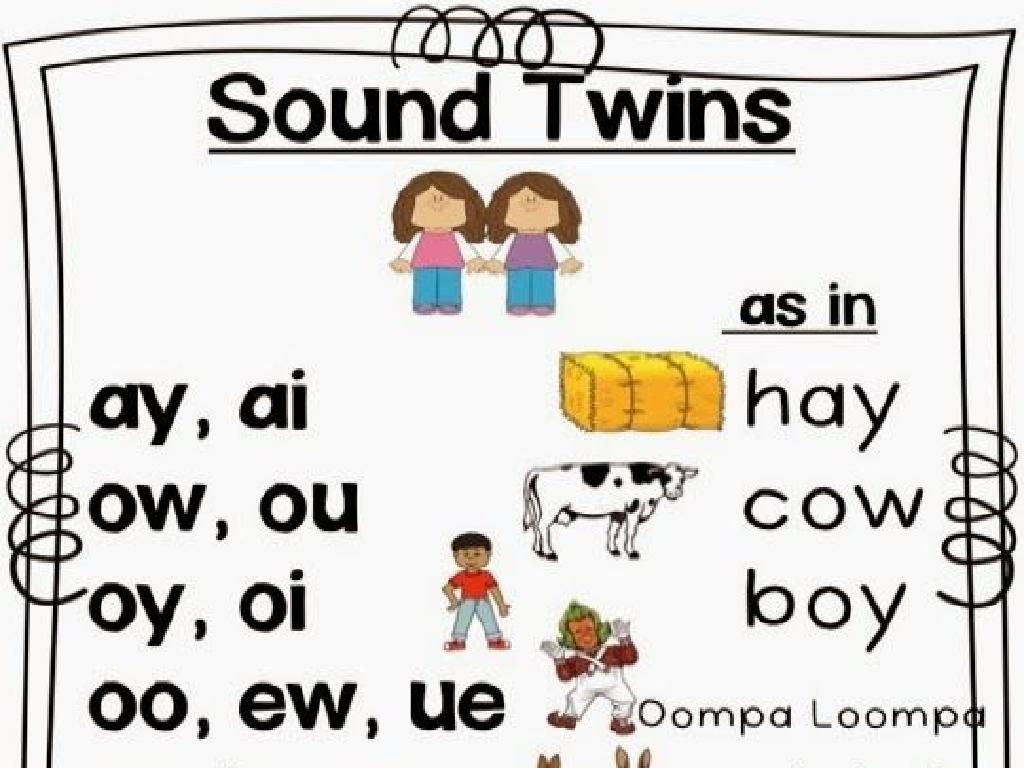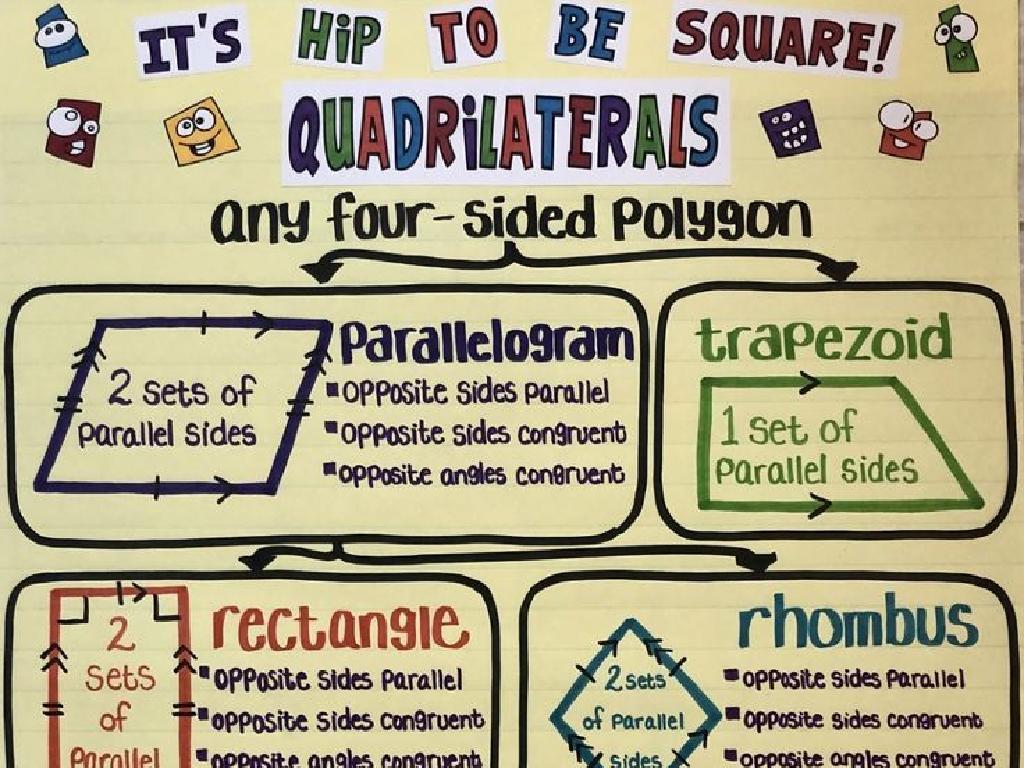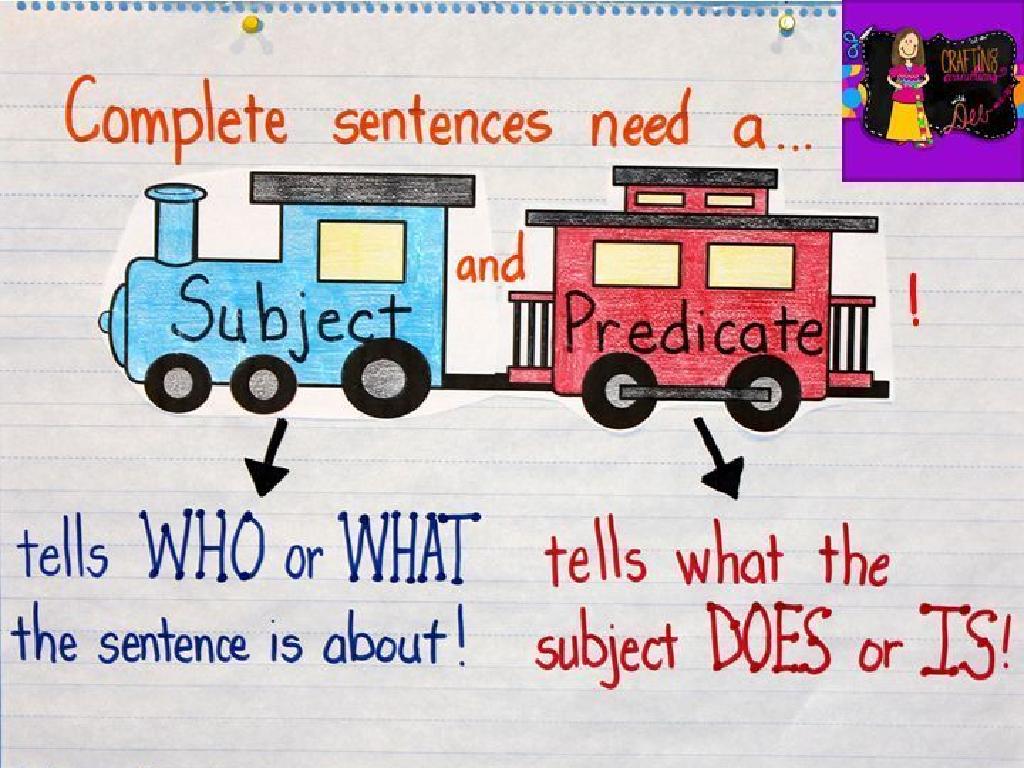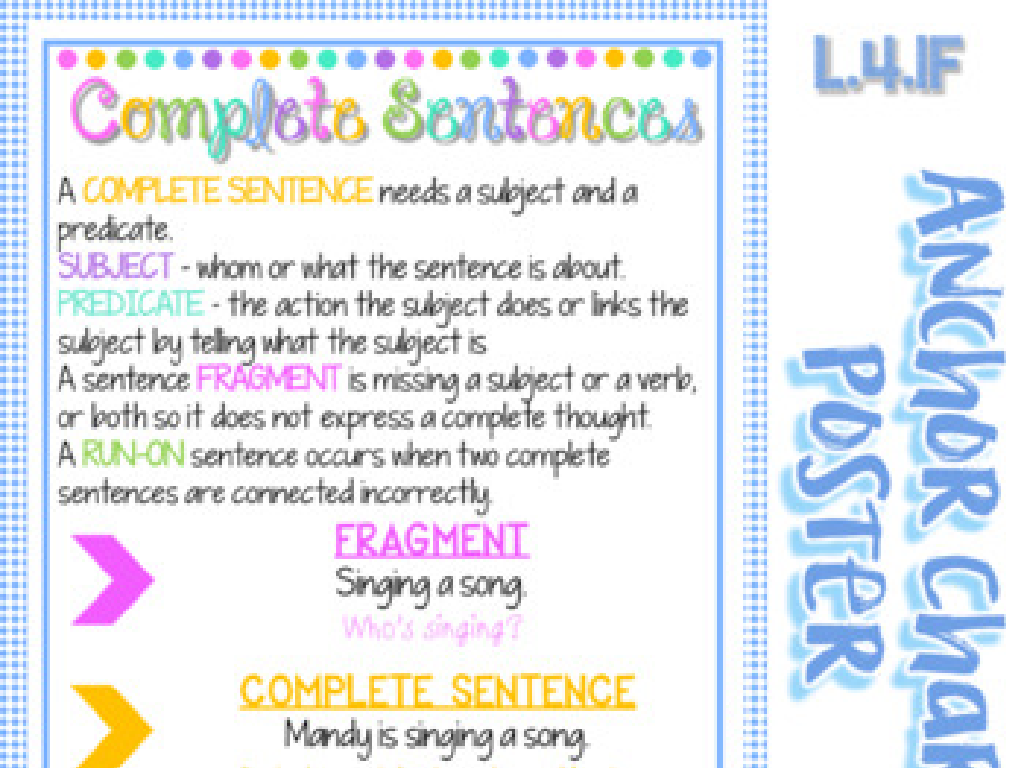One Less - Up To 20
Subject: Math
Grade: Kindergarten
Topic: One More And One Less To 20
Please LOG IN to download the presentation. Access is available to registered users only.
View More Content
One Less – Up to 20
– What does ‘One Less’ mean?
– ‘One Less’ means taking away 1 from a number.
– Counting down from 20
– Let’s practice: 20, 19, 18… down to 1.
– Practical uses of ‘One Less’
– Use ‘One Less’ when sharing or playing games.
– Fun counting activity!
|
Today’s lesson introduces the concept of ‘One Less’ to the students, which is a fundamental part of understanding subtraction and number relationships. Start by explaining that ‘One Less’ means subtracting one from any given number. Use visual aids like number lines or counters to help students visualize the concept. Engage the class in counting backwards from 20 to 1 to reinforce the idea. Discuss everyday situations where they might need to use ‘One Less’, such as when they eat a cookie from a plate of cookies, and there’s one less left. Conclude with a hands-on activity where students can practice this concept by physically removing items from a group, counting toys, or using flashcards. The activity should be interactive and enjoyable to help the concept stick.
Understanding ‘One Less’
– ‘One less’ means taking away 1
– Example with apples
– If you start with 5 apples and eat 1, you have 4 apples left!
– Use a number line to practice
– We’ll subtract 1 on the number line to see what ‘one less’ looks like.
– ‘One less’ is easy and fun!
|
This slide introduces the concept of ‘one less’ to Kindergarten students using simple, relatable examples. Start by explaining that ‘one less’ means taking away one item from a group. Use the example of having 5 apples and eating one to illustrate the concept in a way that’s easy for young children to understand. Then, show how to use a number line to practice finding ‘one less’ by moving one step back on the line. This visual representation helps solidify the concept. Encourage the children to think of other examples where they have ‘one less’ of something, like one less toy to play with or one less crayon in their box. This will help them relate the math concept to their everyday lives.
Counting Down: One Less Up to 20
– Start at 20 and count backwards
– Say the number that is one less
– If we have 20, one less is 19
– Follow along with the countdown
– Practice makes perfect
– Let’s try together: 20, 19, 18… Can you continue?
|
This slide is designed to help Kindergarten students understand the concept of ‘one less’ by counting down from 20. Begin by explaining that counting down means going backwards in numbers. Demonstrate by starting at 20 and then saying 19, emphasizing that 19 is one less than 20. Continue this process, encouraging the students to join in and follow along. As you count down together, pause occasionally to ask what number comes next to ensure understanding. Reinforce the concept by repeating the activity and praising students for correct responses. The goal is for students to become comfortable with the idea of ‘one less’ through repetition and active participation.
Finding ‘One Less’ with Blocks
– Count 20 blocks together
– Remove one block and count again
– How many blocks are left now?
– Discover what ‘one less’ means
– ‘One less’ is the number before in counting
– Practice with different objects
– Try with crayons, toys, or cookies
|
This slide is aimed at helping Kindergarten students understand the concept of ‘one less’ through a hands-on activity with blocks. Start by counting out 20 blocks with the class to ensure they are comfortable with numbers up to 20. Then, physically remove one block and encourage the students to count the remaining blocks. This visual and interactive method helps them grasp the concept of subtracting one to find ‘one less.’ Reinforce the lesson by repeating the activity with different objects, such as crayons or toys, to show that ‘one less’ applies to any set of items. The goal is for students to be able to recognize and articulate the concept of ‘one less’ in various contexts.
Let’s Play a Game: One Less!
– We’re practicing ‘one less’
– I’ll say a number, you show one less
– If I say 5, show me 4 fingers
– Use your fingers to show it
– It’s like taking away 1 finger
– Ready? Let’s play!
|
This slide introduces a fun and interactive game to help Kindergarten students understand the concept of ‘one less’. The game is designed to be simple and engaging, using their fingers to physically represent numbers and the subtraction of one. As you call out numbers up to 20, students will hold up one less finger, reinforcing their counting and subtraction skills. Encourage them to think quickly and use their fingers to find the answer. This activity also helps with fine motor skills and number recognition. Be prepared to assist students who may struggle and offer praise as they grasp the concept. Have a few practice rounds before starting the game to ensure everyone understands the rules.
Finding One Less
– Let’s find one less together
– If I show you 5, what’s one less?
– Observe the examples shown
– Look at the numbers on the screen carefully
– Practice finding one less
– Use your fingers to count one less
– Can you try it with me?
|
This slide is designed to engage Kindergarten students in an interactive activity to understand the concept of ‘one less’. Start by showing a number and together with the class, determine the number that is one less. Use visual aids like number lines or objects to help them visualize the subtraction of one. Encourage the students to participate by asking them to find one less for each number you present. Provide guidance and positive reinforcement as they practice this concept. The goal is to help them become comfortable with the idea of subtracting one from any given number up to 20. For the activity, consider using physical objects like blocks or counters to make the learning experience tactile and engaging.
Your Turn to Try: Finding ‘One Less’
– It’s your turn to find ‘one less’
– Use the worksheet for practice
– Each number on the sheet, find the number before it
– Count using fingers or objects
– If you have 5 apples and eat 1, how many are left?
– Remember, ‘one less’ is just minus one
– 6 is one less than 7, 9 is one less than 10
|
This slide is an interactive activity for students to practice the concept of ‘one less’. Provide each student with a worksheet that has a series of numbers up to 20. Instruct them to identify the number that is one less than each given number. Encourage the use of fingers or classroom objects to physically represent the numbers and help visualize the subtraction of one. For example, if a student has 4 blocks and removes one, they can easily see that 3 blocks remain. This hands-on approach reinforces the concept of subtraction in a tangible way. Be prepared to assist students who may struggle and offer praise as they grasp the concept. Possible activities include: using blocks to build and then remove one, counting backward from a number, or using a number line to visually jump back one space.
Class Activity: Musical Numbers
– Play ‘Musical Numbers’ game
– Stop and say ‘one less’
– If you’re on number 10, you’ll say 9 when the music stops
– Help friends with counting
– Work together to find the number that’s one less
– Enjoy learning numbers!
|
This activity is designed to teach children the concept of ‘one less’ in a fun and interactive way. Set up numbered mats or spaces around the room from 1 to 20. Play music and have the children walk around the numbers. When the music stops, they should stand on a number and shout out the number that is ‘one less’ than the one they’re standing on. For example, if a child is standing on number 8, they should shout ‘7’. Encourage the children to help their peers if someone is struggling to find ‘one less’. This activity not only reinforces the concept of subtraction by one but also promotes social skills and cooperative learning. Prepare to guide and correct gently, and ensure every child gets a turn to participate.
Review: One Less Than a Number
– Understanding ‘one less’
– ‘One less’ means taking away 1 item
– ‘One less’ in daily life
– Using ‘one less’ when we eat a cookie from a plate of cookies
– Counting down from 20
– Practice by starting at 20 and saying the next number down
– Celebrating our counting!
|
This slide is a recap of our lesson on the concept of ‘one less.’ Start by revisiting the meaning of ‘one less,’ which is essentially subtracting one from a given number. Relate this to a scenario familiar to kindergarteners, like having one less cookie to eat. Engage the class by practicing counting down from 20 to 1, emphasizing the ‘one less’ concept with each step. Congratulate the students on their progress and encourage them to use this knowledge in their daily activities, such as sharing toys or snacks, to reinforce their understanding.
Goodbye and Practice at Home!
– Practice ‘one less’ with items
– If you have 4 blocks, take 1 away. How many now?
– Use toys or snacks to count
– Pick 5 cookies, eat 1, count what’s left.
– Count ‘one less’ every day
– See you for more math fun!
|
This slide is aimed at reinforcing the concept of ‘one less’ through engaging at-home activities. Encourage the children to use their favorite toys or snacks to make the activity enjoyable. Remind them to subtract one item from a group and count the remaining items to find ‘one less’. Suggest that they practice this daily to become more comfortable with the concept. The goal is to create a fun learning environment even at home and to look forward to more exciting math activities in the next class. Provide examples for parents to help guide their children in this activity.






